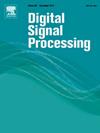基于注意机制和BiTCN模型的滚动轴承故障诊断方法
IF 2.9
3区 工程技术
Q2 ENGINEERING, ELECTRICAL & ELECTRONIC
引用次数: 0
摘要
滚动轴承的故障诊断通常需要提取大量的特征。然而,由于单向特征提取的固有局限性,非平稳信号在两个方向上的时间依赖关系难以捕获,导致故障识别精度低,模型对不同数据集的适应性差。为了解决这个问题,我们提出了一种基于注意机制和双向时间卷积网络(BiTCN)的故障诊断模型。首先,对振动信号进行预处理。然后,处理后的信号被送入挤压和激励网络(SENet),以选择诊断相关的特征,减少计算负荷。其次,与单向TCN模型不同,BiTCN对选择的特征进行处理,从振动信号中提取双向时间依赖关系。多头注意机制(MA)动态地为这些特征重新分配权重,然后由全连通层对这些特征进行分类以进行故障诊断。江南大学和凯斯西储大学的轴承故障数据集验证了该方法的故障诊断性能。实验结果表明,该模型在江南大学轴承故障数据集上的准确率为99.49%,在凯斯西储大学数据集上的准确率可达99%。结果表明,该模型具有良好的轴承故障诊断性能,满足故障诊断的要求,为轴承故障诊断提供了一种新的方法。本文章由计算机程序翻译,如有差异,请以英文原文为准。
Fault diagnosis method for rolling bearing based on attention mechanism and BiTCN model
Fault diagnosis of rolling bearings typically requires the extraction of a large number of features. However, due to the inherent limitations of unidirectional feature extraction, it is challenging to capture temporal dependencies in both directions for non-stationary signals, resulting in low fault recognition accuracy and poor model adaptability to diverse datasets. To address this issue, we propose a fault diagnosis model based on attention mechanisms and a bidirectional temporal convolutional network (BiTCN). Firstly, the vibration signal is preprocessed. Then, the processed signal is fed into Squeeze-and-Excitation Networks (SENet) to select diagnostically relevant features, reducing computational load. Next, the BiTCN processes the selected features to extract bidirectional temporal dependencies from vibration signals, which unlike unidirectional TCN models. The multi-head attention mechanism (MA) dynamically reallocates weights to these features, which are then classified by a fully connected layer for fault diagnosis. The bearing fault datasets from Jiangnan University and Case Western Reserve University validate the fault diagnosis performance of our method. Experimental results show that the accuracy of the proposed model on the bearing fault dataset from Jiangnan University is 99.49%, and the accuracy of the model on the Case Western Reserve University dataset can reach 99%. These results demonstrate that the proposed model exhibits excellent bearing fault diagnosis performance, meets the requirements for fault diagnosis, and provides a novel approach for bearing fault diagnosis.
求助全文
通过发布文献求助,成功后即可免费获取论文全文。
去求助
来源期刊

Digital Signal Processing
工程技术-工程:电子与电气
CiteScore
5.30
自引率
17.20%
发文量
435
审稿时长
66 days
期刊介绍:
Digital Signal Processing: A Review Journal is one of the oldest and most established journals in the field of signal processing yet it aims to be the most innovative. The Journal invites top quality research articles at the frontiers of research in all aspects of signal processing. Our objective is to provide a platform for the publication of ground-breaking research in signal processing with both academic and industrial appeal.
The journal has a special emphasis on statistical signal processing methodology such as Bayesian signal processing, and encourages articles on emerging applications of signal processing such as:
• big data• machine learning• internet of things• information security• systems biology and computational biology,• financial time series analysis,• autonomous vehicles,• quantum computing,• neuromorphic engineering,• human-computer interaction and intelligent user interfaces,• environmental signal processing,• geophysical signal processing including seismic signal processing,• chemioinformatics and bioinformatics,• audio, visual and performance arts,• disaster management and prevention,• renewable energy,
 求助内容:
求助内容: 应助结果提醒方式:
应助结果提醒方式:


